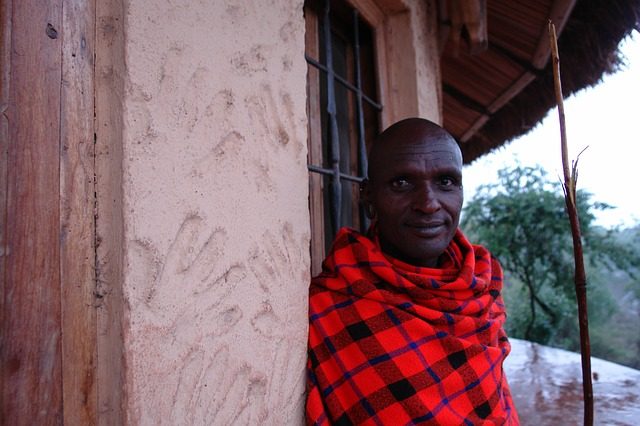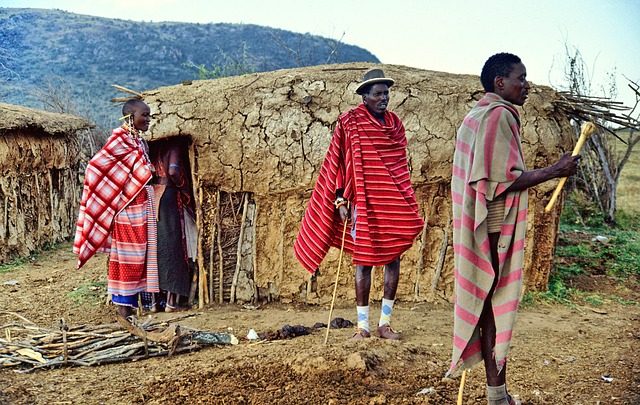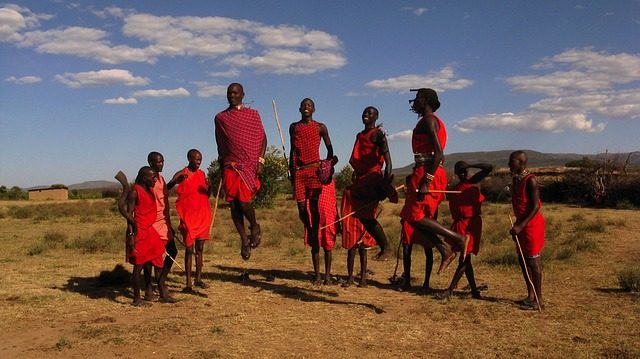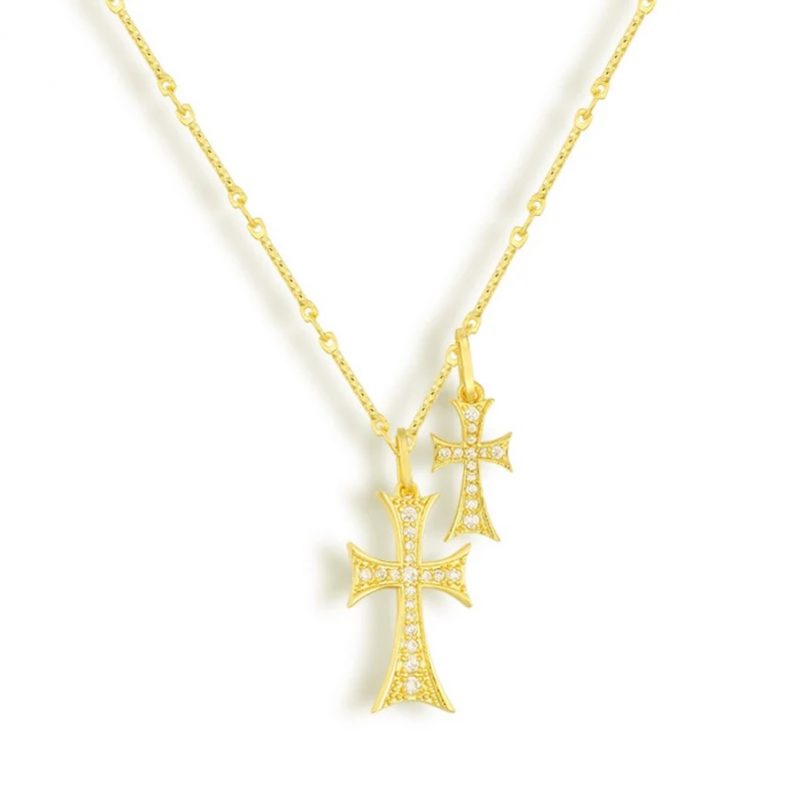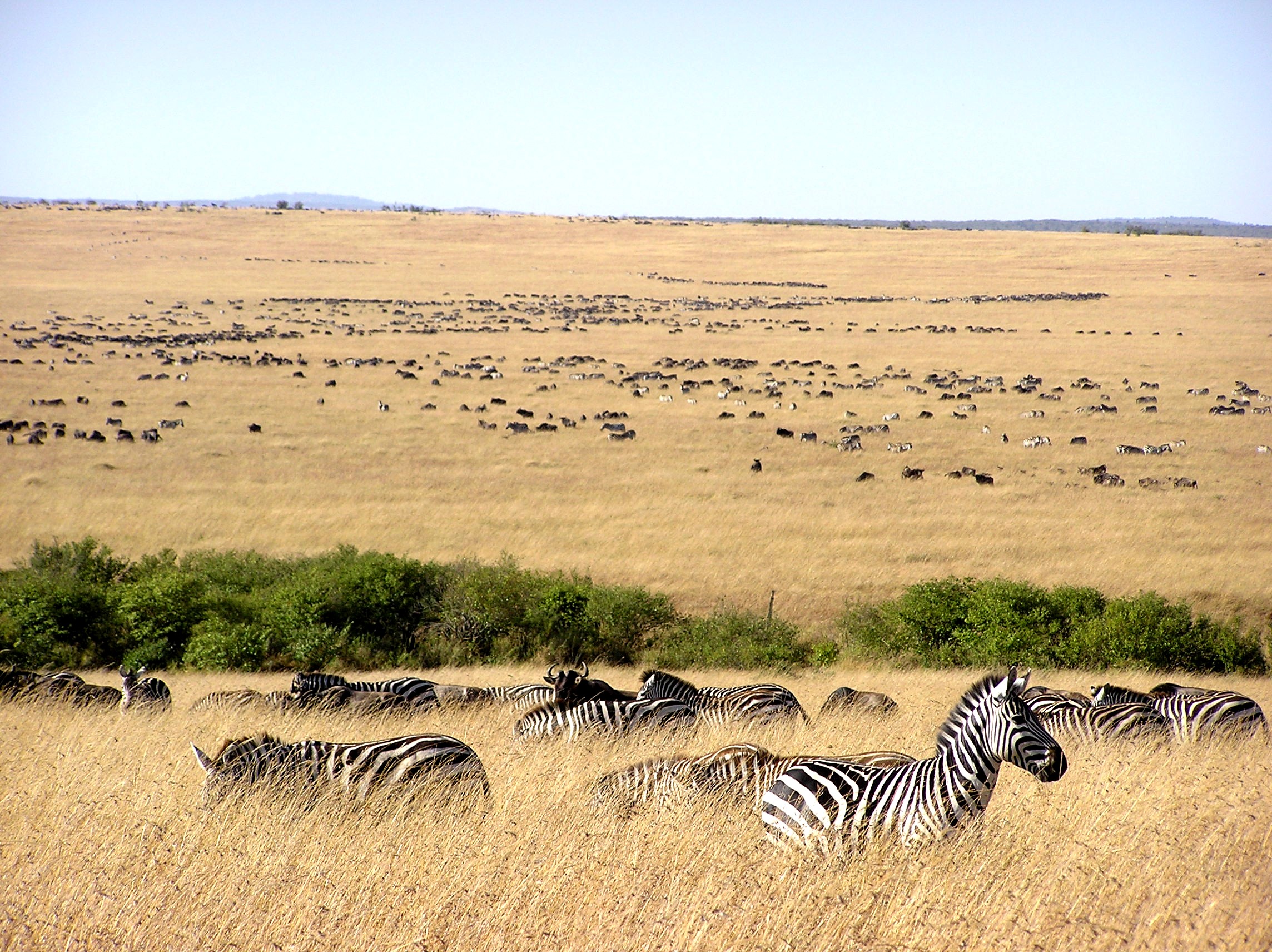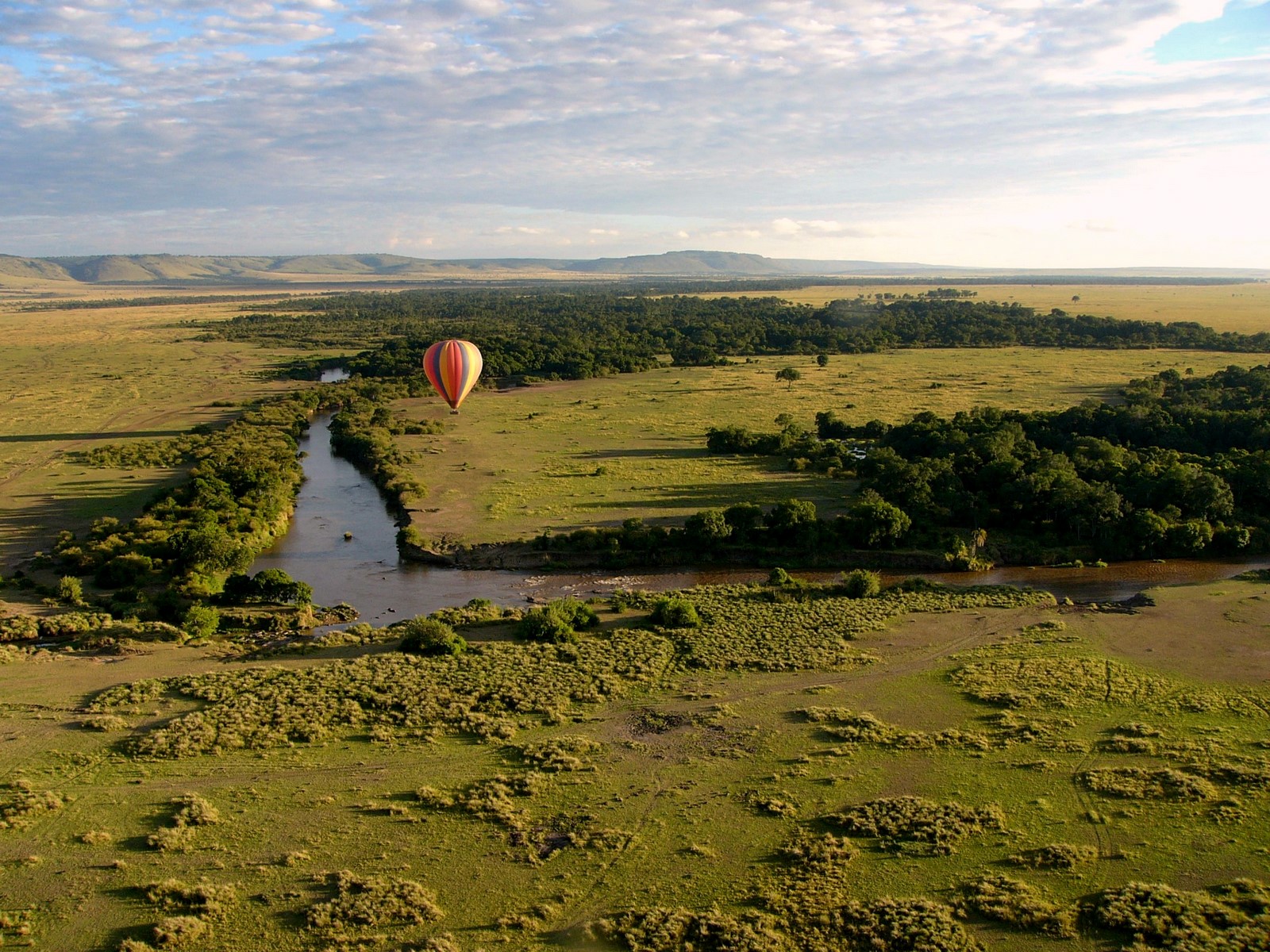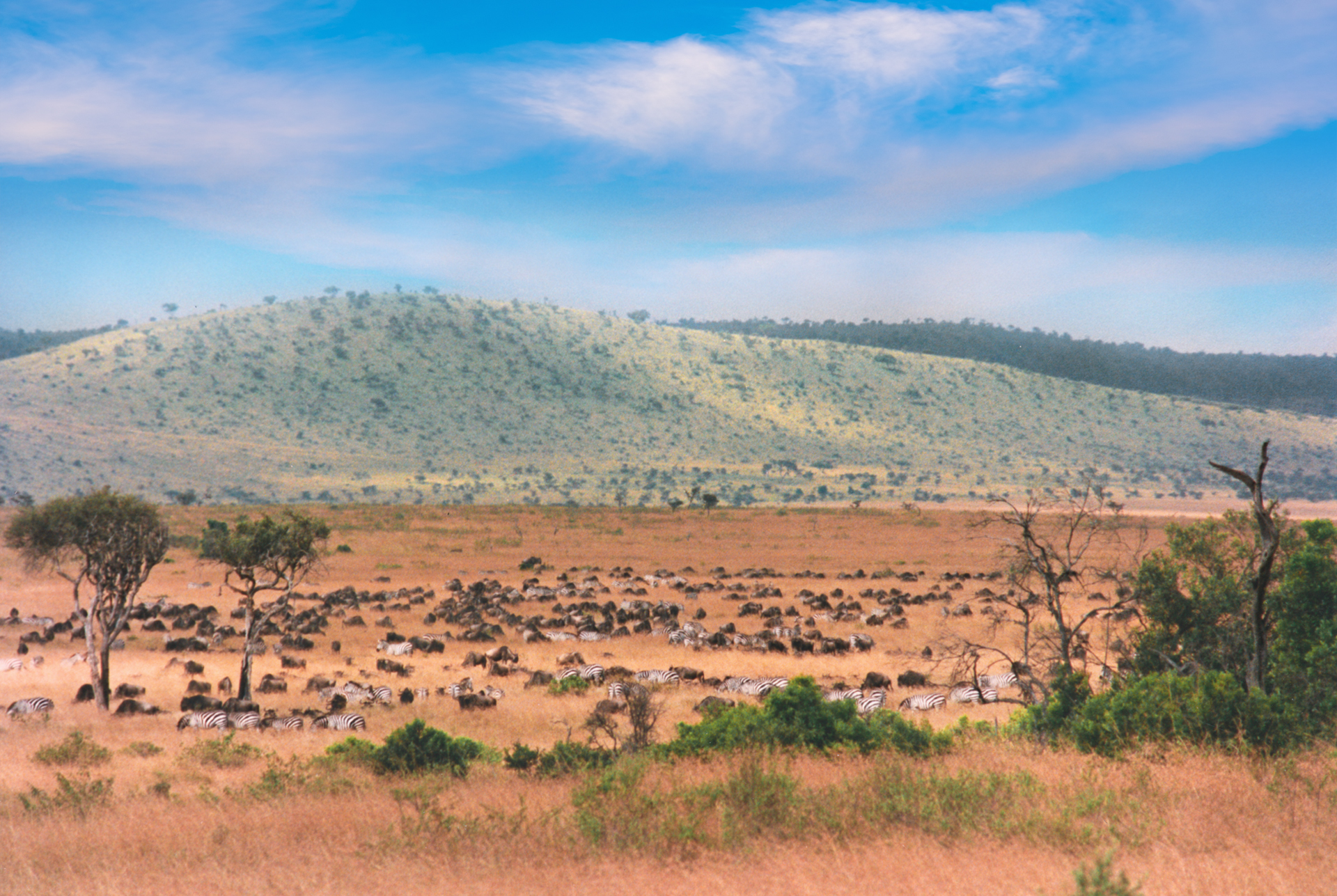Sneaking Into The Lives Of Maasai
Home sweet home
Maasais have traditionally relied on indigenous technology and readily available materials to construct their unusual and interesting houses. They are very impermanent in nature because Maasais are always on the move. They walk for many miles and move from place to place with their animals when food and water run out. The Maasai houses have several names. They are manyatta, kraal or inkajijk. They are arranged in a circular fashion and are shared by an extended family, but due to the land management system in the Maasai land, it is common to see one occupied by a single family.
Construction of houses
Timber poles fixed into the ground and interwoven with smaller branches form the structural framework. Then they plaster ash, mud, branches, grass, sticks, cow dung and urine on the walls. They don’t have windows or chimneys. So, they are dark and smoky inside. There is no running water or electricity. For warmth, they spread animal skins on the floor. Within that constrained space they cook, eat, socialize, sleep, and store fuel, food, and other household possessions.
Vocals for entertainment
Maasai music has no instruments. They use grunting vocals of two different contrasting rhythms. The lead singer calls out something, and the rest would repeat it. Maasai dancing is fascinating. Singers stand in a line. Then each person jumps as high and as long as they can. Some dancers pay close attention; others just giggle, and some others talk to their co-dancers while dancing.
Personal bodily ornamentation
Maasais began to replace sheepskin and calf hides for more commercial material in the 1960s. Men wear a special red cloth called Shuka. They believe that wearing red scares away predators. Moreover, the color red symbolizes their culture. They often wear sandals made of cowhide or walk barefooted. Stretching of earlobes and ear piercing is also part of Maasai beauty. Both women and men wear metal hoops on their earlobes. Moreover, women remove two middle lower teeth. Women and kids keep their hair shaved and short. Males wear them in dyed red braids.
Prized fashion accessory
Beadwork plays a significant role in their bodily ornamentation. Beads are symbolic to the culture. Each color of the bead represents something. Red means strength and bravery; blue represents sky and rain, green symbolizes plants, white cow’s milk, black shows the hardships of people and orange and yellow hospitality. Both men and women wear them. Males wear beaded bands on their ankles, wrists, waists and necks. Women wear colorful clothes decorated with beads. The most common feature is a flat, large disc necklace made of beads using cowhide strips. This necklace has become a prized fashion accessory recognized worldwide.
Patriarchal in nature
Maasai society is patriarchal in nature. The male elder Maasais are directors and advisors who make decisions about significant matters and daily activities in the community. Every morning, a senior who is the leader sits on his seat and announces the schedule for everyone. Female Maasai elders tell the male elders about the village problems
Rites for boys
Enkipaata is the rite of passage for young boys where they wander across the plains for four months led by elders. After that, the laibon chooses a location, and there they build a village of about 40 houses. The boys sleep in the forest the night before the final ceremony called Eunoto. At dawn, wearing loose clothing, they enter the village. The horn of the Greater Kudu is used to summon people for a whole day singing and dancing which involves flirting. The ceremony usually lasts ten days. Through this ceremony, young boys transition from their carefree lifestyle to that of a warrior. The warrior is a source of pride for the Maasais. After the ceremony, the boys wear black clothes for several months. In his late years, through an initiation rite called Olng’eshere ceremony, the warrior status will be elevated to a more responsible elder.
Responsible mature men
The menfolk are responsible for protecting the village in Maasai. So, they erect circular fences made of acacia thorns for the security of the household. The fence keeps predators outside the village and the cattle inside the village. Males are also responsible for herding the cattle, protect them from lions, and search for better pastures and watering holes. During droughts, both boys and men assume the responsibility for herding the cattle.
Women are minors
According to Maasai culture, women are minors, but they play a critical role in the community. Women are responsible for building houses, supplying water, collecting firewood, milking cattle, making clothes and beaded jewelry as well as cooking.
Rites for girls
The circumcision ceremony known as Emorata initiates young girls into adulthood. Currently, Kenya government has outlawed this. The girls are still taught other functional roles until their parents find an appropriate husband for them from a respectable clan.
Communal land management
Maasais live under a communal land administration system that utilizes resources in a sustainable manner. The system allows natural resources such as land and water to everyone. And each section manages its territory. But droughts are becoming severe in Kenya as a result of global warming. So, when droughts become unusually harsh, section boundaries are ignored, and the Maasais graze their cattle throughout the land until the rains arrive.
Cattle is significant
Cattle plays a significant role in the Maasais’ economy. The Maasais trade their livestock for cash, other livestock or livestock products such as siege and milk. Clans and families establish close ties through the exchange or giving of cattle. Different parts of a dead cow are used to make useful objects. Maasais use the skin and hides to make ropes, shoes, clothing and bed coverings; horns to make containers; hooves and bones to make ornaments.
Primitive traditional diet
To a large extent, Maasai people derive their traditional diet mostly from their cattle. Although they do not often eat cow’s meat, they rely on its blood and milk for caloric and protein needs. Bulls, lambs, and oxen are slaughtered for meat for ceremonies and on special occasions.
Blood from cattle
Drinking fresh blood from their cows is a unique tradition in the Maasai culture. They believe that it makes their body healthy. Using an arrow, they puncture a hole in the loose flesh of the cow’s neck. But they only drink it during special occasions such as circumcision, births, and marriages. Also, drunk Maasais drink it to alleviate intoxication and hangovers.
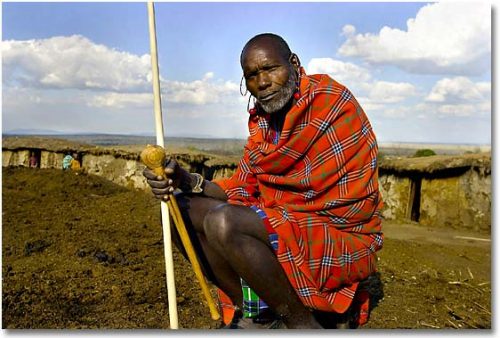
Laibon is the spiritual leader and healer of the Maasais who connects people to God and thus holds an important position Source Credit: Standard Media
Relationship with God
Laibon is the spiritual leader and healer of the Maasais who connects people to God and thus holds an important position within the community. They intervene when something bad happens in the village and cure sicknesses and injuries using local plants. A laibon passes on the title to his son when he dies.
Ritual village ceremonies
Ceremonies take place at ritual villages. Houses and objects in these villages inform the organization of space, shapes, and colors and reproduce fundamental cosmological concepts. The ceremonies symbolize not only age-set but also the continuity of Maasai.
End of life
Death is without a formal funeral service. Burial has been reserved only for chiefs since Maasais believe that burying people is harmful to the soil. Hence, the dead are left out in the open for scavengers.
5 Frequently Asked Questions About Maasai lifestyle
To book a safari in Maasai Mara, please fill out the following form or simply email us on safaris@safari-center.com

